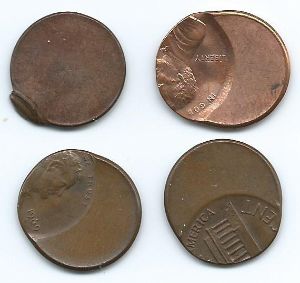
One of the most unique aspects of coin buying as a hobby is stumbling upon pieces of currency that represent fleeting moments in history. For example, error coins illustrate real-time mistakes that occurred inside U.S. mints. Here a few types of these rarities, which are coveted by coin collectors around the world.
3 Types of Error Coins
1. Doublestrike
Once a coin is struck with the die that leaves the illustration, mint mark, year, and other details, it is supposed to exit the striking chamber and move onto the next stage of the assembly line. However, if it does not, it will be struck twice, often in a slightly different position. If the coin only moved a hair, the second strike might create a shadow or block effect on the text. However, if the coin shifted more drastically, the design and text might be hard to make out at all.
2. Broadstrike

Normally, when coins are stamped with their designs, the unmarked metal is surrounded by a ring or “collar,” like a ridged cookie cutter. If the warm, malleable metal is stamped with a die when this collar is not in place, the material will expand out in all directions, like a stamp in a puddle of wax. When salvaged, these unique error coins are called “broadstrikes.”
3. Clipped Planchet
Before they are stamped, the blank metal circles that become coins are called planchets. They are cut out from thin sheets of metal in rows, and the sheet is shifted to cut out more. However, if the sheet is not moved enough, the new cut will overlap with an existing hole, creating a planchet that looks as if a piece were bitten out of it. If the error occurs on the edge of a metal sheet, the coin may have a straight edge cut out of one side instead of a curved piece.
To learn more about these and other sought-after error coins, turn to the experts at Coins Plus of Cincinnati, OH. They will help you navigate the coin buying process so you land on the best possible investment. They can also appraise pieces already in your collection if you want to insure or sell them. Find out more about their coin buying and selling skills on their website, or call (513) 621-1996 to speak with a numismatist.
About the Business
Have a question? Ask the experts!
Send your question

